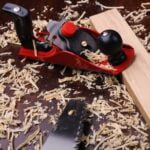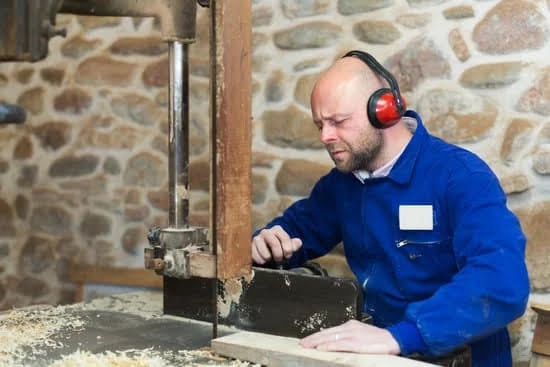Are you wondering what size pipe clamp for woodworking is the best choice for your next project? Choosing the right size pipe clamp is crucial to the success of any woodworking project, as it can significantly impact the quality and stability of your work. Whether you are a beginner or an experienced woodworker, understanding how to select the correct size pipe clamp is essential for achieving professional results.
Pipe clamps are versatile tools that play a vital role in holding wood pieces together during gluing, drilling, or assembly. The proper size ensures that the workpiece is secure and properly aligned, preventing any potential mishaps or errors in your project. To achieve the best outcome, it’s important to understand the different types of pipe clamps available and how to measure for the right size.
In this article, we will explore everything you need to know about selecting the right size pipe clamp for woodworking projects. From understanding the various types of pipe clamps to measuring for the correct size and considering important factors such as material, weight capacity, and jaw opening, we’ll guide you through the process to help you make informed decisions for your woodworking endeavors.
Understanding Pipe Clamps
When it comes to woodworking, choosing the right type of pipe clamp is crucial for the success of your project. There are several different types of pipe clamps available, each with its specific uses and advantages. Understanding these different types will help you make an informed decision on what size pipe clamp for woodworking is best suited for your particular project.
Types of Pipe Clamps
One of the most common types of pipe clamps used in woodworking is the parallel jaw clamp. These clamps are ideal for applying even pressure along the length of a workpiece and are often used for edge-gluing panels.
Another type is the bar clamp, which features a sliding head that can be moved along the length of the bar to accommodate different workpiece sizes. Pipe clamps also come in deep throat styles, which have a longer reach and are great for securing large pieces or reaching into tight spaces.
Specific Uses
Each type of pipe clamp has its specific uses in woodworking. For example, F-clamps are versatile and can be used for a wide range of applications, making them a staple in any woodworker’s toolkit.
Parallel jaw clamps, on the other hand, excel at providing even pressure across the entire workpiece, making them perfect for glue-ups and panel assembly. Understanding the specific uses of each type will help you determine what size pipe clamp for woodworking is most suitable for your needs.
Considerations When Choosing
When choosing a pipe clamp size for woodworking, it’s essential to consider factors such as the type of project, material being worked with, and weight capacity required. For larger projects such as furniture making or cabinet building, deep throat or heavy-duty pipe clamps may be necessary to accommodate thicker pieces of wood and provide sufficient pressure during glue-ups. Understanding these considerations will ensure that you select the right size pipe clamp for your woodworking projects.
Measuring for the Right Size
When it comes to woodworking, using the right size pipe clamp is crucial in ensuring the success of your project. Choosing the correct size will not only provide the necessary support and pressure for gluing and assembly but also prevent any potential damage to your workpiece. In this section, we will provide a step-by-step guide on how to measure and determine the correct size of a pipe clamp needed for your woodworking project.
Step 1: Determine the Project Requirements
The first step in measuring for the right size pipe clamp is to determine the specific requirements of your woodworking project. Consider factors such as the size and thickness of the wood pieces you will be working with, as well as any angles or corners that may require clamping.
Step 2: Measure the Workpiece
Once you have determined your project requirements, it is important to measure the dimensions of your workpiece. This includes both length and width, as well as any irregularities or unique shapes that may require specialized clamping techniques.
Step 3: Calculate Pressure and Jaw Opening
After measuring your workpiece, calculate the amount of pressure needed for proper clamping. Consider the weight and material of the wood, as well as any additional pressure required for securing joints or edges. Additionally, take into account the jaw opening of the pipe clamp to ensure it can accommodate the thickness of your workpiece.
By following these steps and taking into consideration all relevant factors, you can accurately determine what size pipe clamp is needed for your woodworking project. Proper measurement and selection of a pipe clamp will ultimately contribute to higher-quality results in your woodworking endeavors.
Factors to Consider
When it comes to selecting the right size pipe clamp for woodworking, there are several important factors that need to be considered. One of the critical aspects to think about is the material of the clamp.
Pipe clamps are commonly made from either steel or cast iron, with steel being more lightweight and easier to handle, while cast iron offers greater durability and strength. Depending on the specific needs of your project and your working conditions, you will need to decide which material best suits your requirements.
Another crucial factor to take into account is the weight capacity of the pipe clamp. Different projects will require different levels of pressure and strength from the clamp, so it’s essential to choose a size that can handle the load without compromising safety or quality. It’s important to always consider a safety margin when determining weight capacity, as exceeding the limit could lead to potential accidents or damage.
In addition to material and weight capacity, jaw opening is another key consideration when selecting a pipe clamp size for woodworking. The jaw opening determines how wide the pipe clamp can extend, allowing for larger workpieces to be secured effectively. Understanding the size of workpieces you typically deal with in your woodworking projects will help guide you in choosing an appropriate jaw opening for your pipe clamps.
| Factor | Consideration |
|---|---|
| Material | Steel or cast iron |
| Weight Capacity | Determine load needs and consider safety margin |
| Jaw Opening | Choose according to typical workpiece sizes |
Common Mistakes to Avoid
When it comes to choosing the right size pipe clamp for woodworking, there are several common mistakes that woodworkers often make. These mistakes can impact the quality of the project and even pose safety hazards. By being aware of these common errors, woodworkers can avoid them and ensure that they select the appropriate pipe clamp size for their woodworking tasks.
Some of the most common mistakes when choosing a pipe clamp size include:
- Not taking measurements accurately: One of the biggest mistakes woodworkers make is not measuring properly for the size of the pipe clamp needed. It’s important to measure the width and depth of the material being clamped together in order to determine the correct size of pipe clamp.
- Ignoring weight capacity: Another mistake is overlooking the weight capacity of the pipe clamp. Using a clamp with a lower weight capacity than needed can result in it failing under pressure, leading to damage or injury.
- Incorrectly assessing jaw opening: Woodworkers sometimes overlook the importance of considering the jaw opening when selecting a pipe clamp. Not having a wide enough jaw opening can result in not being able to securely hold larger materials, affecting the quality of the project.
To avoid these common mistakes, woodworkers should take their time to measure accurately, consider weight capacity, and assess jaw opening requirements before selecting a pipe clamp size for their woodworking projects. By paying attention to these factors, they can ensure that they choose an appropriate pipe clamp size that meets their specific needs and delivers optimal results.
Choosing the Right Pipe Clamp for Different Projects
When it comes to woodworking projects, the size of the pipe clamp you use can significantly impact the success and quality of your finished product. Different types of woodworking projects require specific pipe clamp sizes to ensure proper support and pressure during the clamping process. Here’s a guide to help you understand what size pipe clamp for woodworking projects such as furniture making, cabinet building, and woodturning.
Furniture making often requires a variety of pipe clamp sizes to accommodate different parts of a piece. For larger items like dining tables or bookshelves, longer bar clamps are typically used to provide even pressure across the entire width of the piece.
Smaller furniture pieces like chairs or end tables may only require smaller pipe clamps with shorter bar lengths. It’s important to assess the size and scale of your furniture project to determine the appropriate pipe clamp size needed for optimal clamping performance.
Cabinet building also demands careful consideration when selecting the right pipe clamp size. Cabinet doors and panels often require precise pressure application during glue-ups, which means using appropriately sized pipe clamps is essential.
In this case, smaller bar clamps with deep throat depths may be necessary for securing narrow panel pieces together, while larger parallel jaw clamps could be ideal for assembling cabinet carcasses. Understanding the specific requirements of your cabinet building project will help you determine what size pipe clamp is best suited for each task.
Woodturning, on the other hand, poses unique challenges when it comes to selecting pipe clamp sizes. Unlike traditional flat woodworking projects, woodturning involves shaping rounded workpieces on a lathe, requiring specialized clamping solutions. Small or medium-sized F-style or C-clamps can be useful for securing turning blanks onto a lathe chuck or faceplate while allowing clearance for turning tools.
For segmented turning or segmented bowl projects, band clamps with adjustable corner blocks may be preferred to apply pressure evenly around irregular shapes. By understanding the distinct needs of woodturning projects, you can identify what size pipe clamp is most suitable for your specific application needs.
Ultimately, choosing the right size pipe clamp for various woodworking projects is crucial in ensuring successful outcomes. By considering factors such as project scale, part dimensions, and assembly requirements, woodworkers can confidently select the appropriate pipe clamp sizes needed for furniture making, cabinet building, and woodturning endeavors.
Tips for Using Pipe Clamps Effectively
When it comes to woodworking, using the right size pipe clamp is crucial for the success of your project. But knowing what size pipe clamp for woodworking can be a bit challenging. In this section, we will provide practical tips and techniques for using pipe clamps effectively in woodworking projects, regardless of the size.
One important tip for using pipe clamps effectively is to ensure that the jaws are clean and free from any debris or sawdust before use. This will help to prevent slipping and ensure a secure grip on the wood. Additionally, applying a small amount of wax or lubricant on the jaws can also help to improve grip and prevent staining on the wood.
Another useful technique for using pipe clamps effectively is to apply consistent pressure when clamping the wood. Uneven pressure can result in warping or bending of the wood, so it’s important to apply pressure evenly along the entire length of the clamp. Using wooden blocks or cauls between the clamp and wood surface can help distribute pressure more evenly.
Furthermore, utilizing proper alignment and spacing when using multiple pipe clamps is essential for achieving straight and even results in your woodworking project. Making sure that the clamps are aligned parallel to each other and evenly spaced along the length of the workpiece will help prevent uneven pressure and ensure a professional finish.
| Practical Tips | Techniques |
|---|---|
| Ensure clean jaws | Apply consistent pressure |
| Use lubricant on jaws | Proper alignment and spacing |
Conclusion
In conclusion, selecting the right size pipe clamp for woodworking is crucial for the success of any project. The proper size and type of pipe clamp can make a significant difference in the quality and durability of the finished product. By understanding the different types of pipe clamps available, measuring for the right size, and considering factors such as material, weight capacity, and jaw opening, woodworkers can ensure that they have the appropriate tools for their specific project needs.
It is important to remember that common mistakes can be easily avoided when choosing pipe clamp sizes by taking the time to measure accurately and consider all relevant factors. By doing so, woodworkers can save themselves from unnecessary frustration and setbacks in their projects. Additionally, exploring the specific pipe clamp sizes needed for different woodworking projects, such as furniture making, cabinet building, and woodturning, will further enhance the overall results.
In summary, by following the tips provided in this article and using pipe clamps effectively in woodworking projects, woodworkers can achieve success regardless of the project’s size or complexity. Choosing the right size pipe clamp is an essential step towards ensuring that each woodworking endeavor turns out as planned with high-quality results. It’s clear that understanding what size pipe clamp for woodworking is necessary for achieving success in any project.
Frequently Asked Questions
What Pipe Is Best for Woodworking Clamps?
The best pipe for woodworking clamps is typically black or galvanized steel pipe, as it is strong and durable enough to withstand the pressure applied during clamping. It’s important to choose a pipe that is of high quality and has the appropriate diameter for the clamps being used.
What Clamps Should a Woodworker Have?
A woodworker should have a variety of clamps in their toolkit, including bar clamps, parallel jaw clamps, spring clamps, quick-grip clamps, and of course, pipe clamps. Each type of clamp serves a different purpose and having a selection allows for greater versatility when working on different woodworking projects.
What Are the Most Useful Pipe Clamp Lengths?
The most useful pipe clamp lengths are typically in the range of 24 inches to 48 inches. These lengths provide enough reach and pressure for a wide range of woodworking tasks without being overly cumbersome to handle. It’s also helpful to have some shorter lengths available for smaller projects or tight spaces.

Hi everyone! I’m a woodworker and blogger, and this is my woodworking blog. In my blog, I share tips and tricks for woodworkers of all skill levels, as well as project ideas that you can try yourself.





